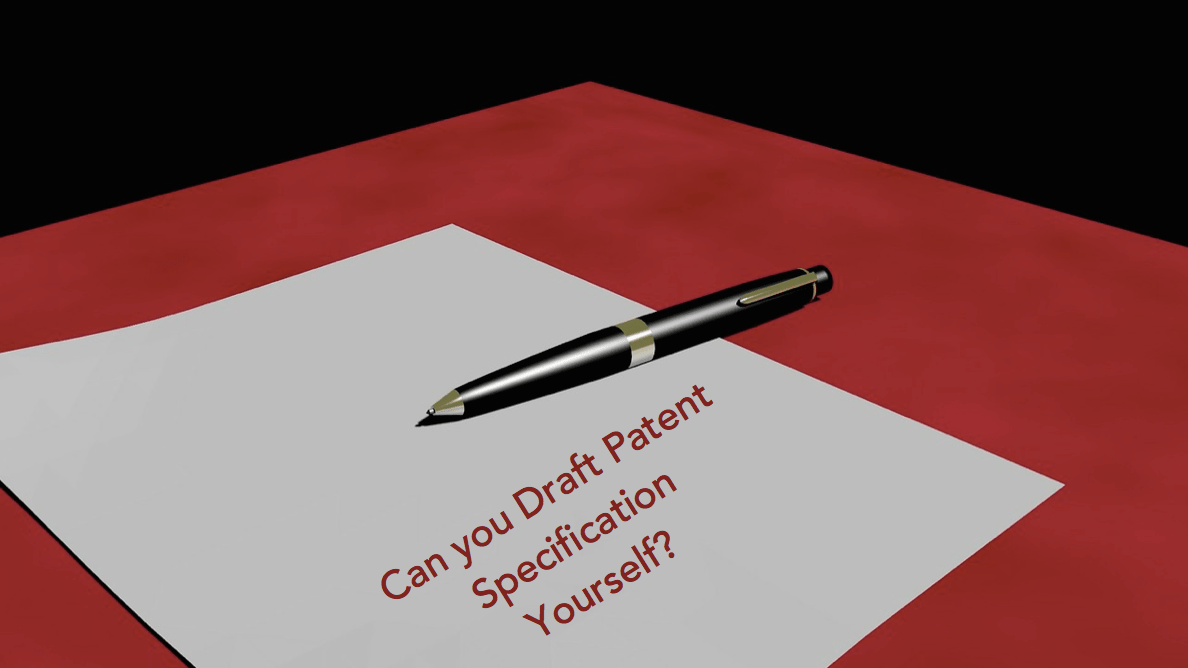
Drafting a patent specification is an art. It requires both legal and technical expertise. In addition, it may have a lot of bearing on the future enforcement of the patent itself. In general, patent specifications are drafted with the help of a patent attorney or patent agent who has the technical background as well as legal background or patent law expertise.
Getting a patent on your innovation can prove to be an expensive affair. Most inventors look at cutting down the cost by not engaging professional services. Sometimes, they decide to draft the patent specifications by themselves. This, however, is never a good idea. At the outset, it must be mentioned a patent specification is a techno-legal document. So, along with technological expertise, you will also need the legal acumen for drafting patent specification. Attempting to draft a patent specification on your own can prove detrimental to your interest in getting a patent. This is because, if the claims in the patent are not drafted properly, it can severely narrow the scope of your innovation, thus making your patent useless.
Brief content of a patent specification:
1. Title: The title should be broader than the abstract of the specification.
2. Field of Invention– This part must state the field of study that your invention corresponds to.
3. Background and Prior Art- In this part you are required to state the drawbacks in the prior art. This part must clearly bring out why your invention was necessary despite the existence of prior art. Basically, the value addition that your technology brings in the field of invention.
4. Objects of Invention– This part must state the objective of your invention. The need for your invention.
5. Summary– The first sentence of the paragraph should be rewritten form of independent claim(s). The next paragraphs should discuss the various elements of all dependent claims.
6. Detailed Description of Preferred Embodiment– This part must disclose the invention so as to enable an ordinary person skilled in the art to make and understand the invention. This part must be drafted with utmost care as it cannot be amended after the filing.
7. Brief Description of Drawings– This part must include an ample explanation for each drawing that appears in your patent draft.
8. Abstract: The abstract should be broader than the Summary.
9. Claims– This is the most important part of a patent draft. It is the legally-operative part of the patent application. This is because it defines the boundary of protection provided by a patent. The claims part must be drafted with due care and caution, unequivocally. If the claims are not drafted properly, the chances are your whole patent will be useless.
The patent claims construction must be drafted to:
- Define the matter for which protection is sought;
- Be clear and concise;
- Be supported by the description.
Patent claims are of two kinds: Dependent claims and Independent claims. Dependent claims should be useful rather having no benefit to the Applicant.
Conclusion:
Simply put, your whole patent depends on the way in which you draft the claims. Drafting claims require the utmost skill and expertise. It must be clear, concise and yet effective so as to give you the protection that you sought for.
It is because of this, drafting a patent specification on your own is a risky business. An improper claim puts you at the risk of not getting the protection you wanted and exposing your invention to the public without due protection.
On the whole, your invention is a priceless commodity. Don’t jeopardize its protection by drafting the specification on your own. Engage professional patent drafting services and endow your invention with complete and adequate protection.
